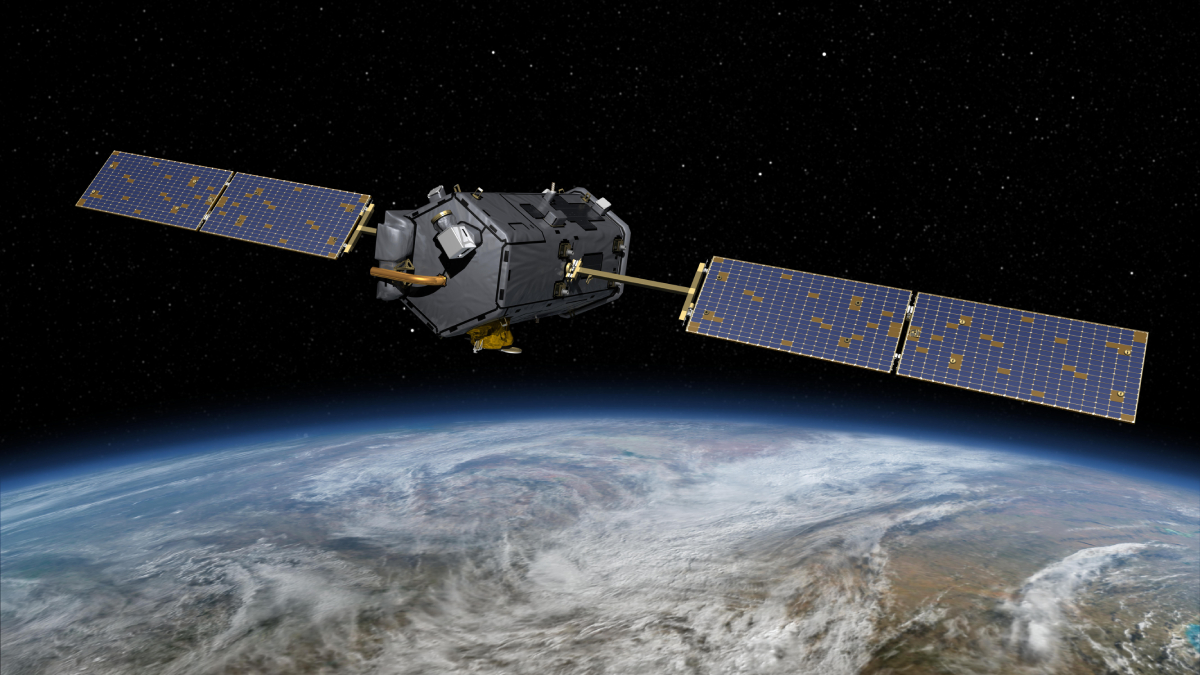Research & Developments is a blog for brief updates that provide context for the flurry of news regarding law and policy changes that impact science and scientists today.
For the past month, the Trump administration, via NASA’s Acting Administrator Sean Duffy, has been directing NASA employees to implement workforce adjustments and plan for the shutdown of dozens of missions and programs slated for cuts under in the President’s Budget Request to NASA. Doing so ahead of a Congressionally-approved budget for fiscal year 2026 (FY26) is tantamount to illegal impoundment of federal funds appropriated for the current fiscal year (FY25), according to an 18 July letter to Duffy signed by 64 members of Congress.
Now, despite warnings that their actions are illegal, NPR reports that Duffy and other senior NASA officials have continued to secretly direct NASA employees to draw up plans to end at least two major satellite missions specifically designed to monitor global carbon dioxide. Orbiting Carbon Observatory (OCO)-2, a free-orbiting satellite, and OCO-3, which is attached to the International Space Station, are slated for defunding in the 2026 President’s Budget Request (PBR).
David Crisp, a retired NASA atmospheric physicist who was the principal investigator of the original OCO mission and was OCO-2’s science team leader, told NPR that he was contacted by several NASA employees who asked him pointed questions about the satellites that added up to mission termination plans.
“What I have heard is direct communications from people who were making those plans, who weren’t allowed to tell me that that’s what they were told to do. But they were allowed to ask me questions,” Crisp said. “They were asking me very sharp questions. The only thing that would have motivated those questions was [that] somebody told them to come up with a termination plan.” (Crisp is also a Fellow of AGU, which publishes Eos.)
Two current NASA employees confirmed to NPR that NASA leaders were told to make plans to terminate projects that would lose funding should Trump’s PBR be enacted. The employees, who requested anonymity, also told NPR that agency leadership is seeking private backers to keep the OCO satellites running should they lose federal funding.
The Orbiting Carbon Observatories were designed specifically to monitor and map the global carbon budget, and they have provided valuable data about the drivers of climate change. The satellites also exhibited a surprising ability: monitoring plant growth. The mission has provided maps of photosynthesis around the world that have proved valuable tools for farmers and the agricultural industry, including the U.S. Department of Agriculture. Experts warn that farmers could lose access to those tools if the satellites are privatized or decommissioned.
“Just from an economic standpoint, it makes no economic sense to terminate NASA missions that are returning incredibly valuable data,” Crisp said.
Budgets Pending
Both the Senate and House appropriations committees recently released FY26 funding bills for NASA for consideration by Congress. The House does seek to cut NASA’s overall budget, though far less than requested by the Trump administration. The House’s draft bill does not break down appropriations by NASA’s subdivisions or programs, so there is little information about whether OCO would be defunded should the House’s budget be adopted.
The draft budget from the Senate appropriations committee, which also doesn’t mention OCO by name, nonetheless offers more details about what funding they would approve. Under that budget framework, NASA would receive $24.9 billion total (up from $24.8 billion in FY25). NASA’s Science Mission Directorate would lose a modest amount of funding ($7.3 billion, down from $7.5 billion), and the Earth Science division, which operates OCO, would also lose some funds ($2.17 billion, down from $2.2 billion).
The Senate committee’s more detailed explanation may shed light on its plans for OCO and other Earth-observing missions:
- “The Committee rejects the mission terminations proposed in the fiscal year 2026 budget request for Earth Science, Planetary Science, Astrophysics, and Heliophysics.” That’s about as explicit as they can be.
- “In advancing the U.S. national interest, NASA should seek, to the extent practicable, to retain public ownership of technologies, scientific data, and discoveries made using public funds.” This directive runs counter to NASA’s plans to privatize satellites that Trump seeks to defund.
- “Earth Science missions could help to understand the efficacy of carbon dioxide removal proposals, including to track carbon stocks and carbon cycling in aboveground biomass and coastal marine ecosystems.” The committee recognizes that Earth-observing satellites are important to the future of the planet.
Neither the House nor Senate appropriations bills have been taken up by either chamber of Congress. The bills still need to be passed by their respective chambers, reconciled into a single budget bill that passes both chambers of Congress, and signed into law by the president before FY25 ends on 30 September.
—Kimberly M. S. Cartier (@astrokimcartier.bsky.social), Staff Writer
Correction 5 August 2025: David Crisp’s position with NASA and his association with AGU have been corrected.
These updates are made possible through information from the scientific community. Do you have a story about how changes in law or policy are affecting scientists or research? Send us a tip at eos@agu.org.







